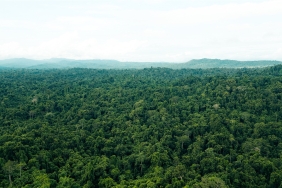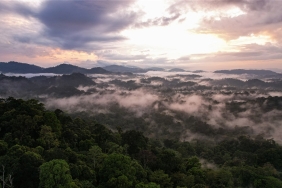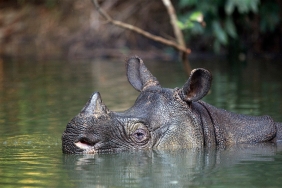SUSTAINABLE FOREST MANAGEMENT IN SAWENDUI VILLAGE
By: Natalia Trita Agnika
On Monday (13/06), part of the Saireri Expedition team entered a forest located in Sawendui Village, Yapen Islands Regency, Papua. We followed some indigenous community members in the village who were measuring the diameter and height of trees. They are members of the Kornui Multipurpose Cooperative (KSU) who are conducting an inventory of stands before logging (ITSP). KSU Kornui is one of WWF-Indonesia Papua Program's partners in conducting the community logging program as part of sustainable forestry.
On the occasion, Irianto Stef Amir, WWF-Indonesia Papua Program's Forest Officer explained that sustainable forestry is a sustainable forest management that is specialized in Papua for indigenous forest management. "So we are working with the local government, especially the Papua Provincial Government on how to facilitate the community to manage their own forests with sustainable and more environmentally friendly systems," he explained.
The forest in Sawendui was chosen as one of the locations for the community logging program because it has very rich forest potential. Aside from being a habitat for birds of paradise, it is also strategically located close to the beach and is an area close to turtle nesting. "It is one of the areas that we must intervene to manage properly," said Irianto Stef.
When WWF-Indonesia conducted socialization, it turned out that the community was very supportive of these activities. They realize that sustainable forest management that is currently being carried out, is much more profitable because it uses environmentally friendly equipment and the timber produced is more. The community also has its own benefits because they can cut for today but can also save for their children and grandchildren. And most importantly, they can manage it themselves and other people cannot tamper with it (no intervention from outside companies).
However, in this community logging program, indigenous people cannot manage all of the forest. There are important areas that must be protected. Indigenous communities can only produce areas that are more than 300 meters from the coast and fit into mapped plots. There are 35 plots with each plot measuring 1 km x 1 km. Each year, they can only produce one plot. Thus, they can rotate each year for their forest production. In addition, not all trees can be cut down. The only trees that can be cut down are those with a diameter of more than 40 cm. Large trees related to the need for mother trees for nurseries and protected trees cannot be cut down. "In the past, people cut down trees because they were logging or gardening. They didn't know which trees were production trees. They didn't know which trees were protected. Now that WWF has arrived, we know which trees are protected, which are produced," said Hendrikus Woriasi, a member of KSU Kornui.
Sustainable forest management also requires the use of more environmentally friendly tools. For this reason, the tool used is the portable saw mill. The machine can be moved around so that it is more efficient because the community can process wood at the logging site. The fuel used is also more economical. Besides being efficient, there is very little waste from the wood (yield). Almost all wood can be used. Unlike chain saw, where the yield is up to 50%. "We used to process wood using chain saw, a lot of wood was wasted. Now we use saw mill, the result is good, even small," said Damianus Kurano, a member of KSU Kornui.
Indigenous people who have cut down trees are obliged to replant the areas that have been cut down. They have prepared seedlings. Based on an agreement with the indigenous community, if one tree is cut down, 10 more trees must be planted.
"If the forest is cut down carelessly, gradually, future generations will get it. The coastal area and its surroundings, if we protect tra, future generations will definitely tra be able to enjoy it," concluded Hendrikus Woriasi on our way to mark the trees that can be cut down and those that cannot.





